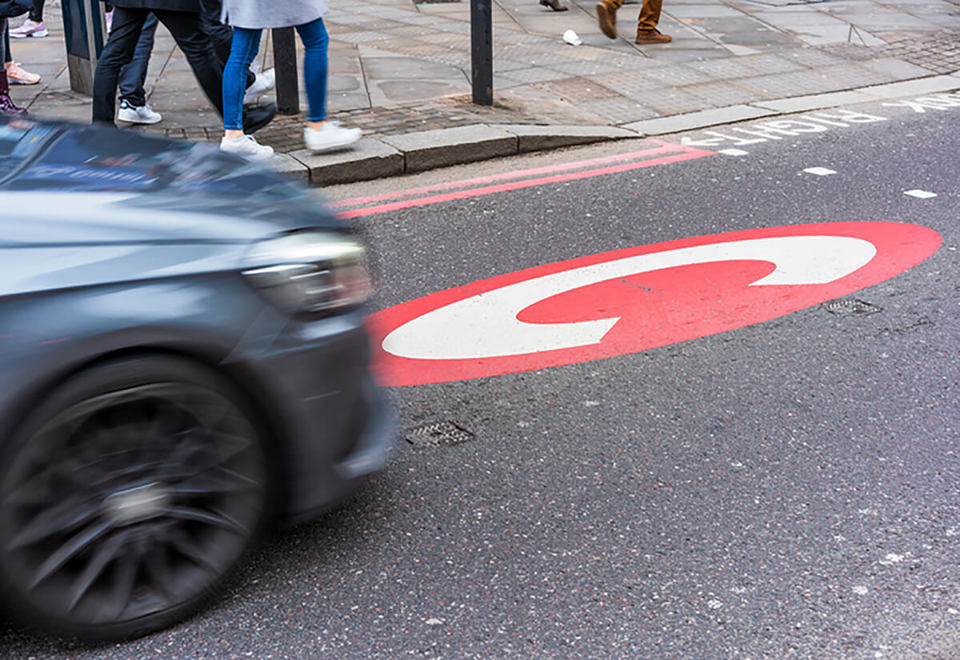Congestion charging is not unique to London in the UK. The first charging zone in the UK was introduced in Durham in 2002, designed to protect the historic centre of the city.
And other cities in the UK have imposed restrictions on certain vehicle types, in many cases to encourage bus operators to run more modern and less polluting vehicles.
There are many similar schemes in cities across Europe – more than 200 in 10 countries. For example, many German cities restrict access by vehicles that do not meet Euro 4 diesel requirements or later.
Commercial vehicles have faced restrictions around Greater London since the Ultra Low Emission Zone (ULEZ) was introduced in 2006.
Operators of heavy diesel vehicles such as lorries, buses and coaches are required to meet specific emissions standards or face paying a daily charge to drive in Greater London.
The zone has had an impact on air quality as London witnessed the level of NOx emissions fall 2% and levels of particulate matter fall by more than 3%.
Requirements for the ULEZ have been tightened and it should ensure continued improvements in air quality.
Although most LCV fleets wouldn’t be affected by it, the strategy sets a template for schemes in other areas, and there could be future changes that would affect LCV operators, for example if restrictions were set on lighter vehicles or much younger vans.
For a congestion or road-charging scheme to work effectively, certain measures must be in place, including good public transport alternatives and a ring road route around the zone so it can be easily bypassed.
The growing infrastructure for plug-in vehicles, as well as an increasing choice from vehicle manufacturers, is slowly beginning to make them a more realistic alternative to pure petrol and diesel vehicles.
Fifteen local authorities in the UK are currently undertaking studies around introducing ultra low emission zones and have been granted government funding (see panel).
ULEZs in major cities can dramatically reduce life-threatening air pollution by encouraging drivers to switch to cleaner, greener vehicles.
Research by Hendrik Wolff, of the Department of Economics at the University of Washington, suggests that the health benefits of ULEZs from cleaner air in German cities have turned out to be worth twice the cost of upgrading the country’s fleet of private and commercial vehicles.
His study, published in the Economics Journal in August 2014, also shows that cities that have merely built ring
roads or upgraded public transport have not experienced a cut in pollution. Guidance from the Department for Environment, Food and Rural Affairs suggests that restrictions on vehicles could be made based on compliance with European emissions regulations, engine size or CO2 emissions, but organisations likely to be affected are calling for a consistent approach.
A statement from the BVRLA says: “As new zones emerge, a harmonised approach to the emission standards which are set will be vital and the BVRLA is working closely with the Government to set up a national framework for emission standards.”
The association’s calls for a common framework have won support from House of Commons Environmental Audit Committee chairman Joan Walley, who says: “As a matter of urgency, the Government must set up a national framework for low emission zones to establish a recognised standard for emissions and vehicle identification, supported by a national certification scheme of retrofit technologies.”
The number of ULEZs is likely to increase as local authorities establish how they could work and bring air quality benefits. The impact on fleets is likely to be limited as schemes that impose restrictions on vehicles could be related to compliance with European emissions rules.
Vehicle life-cycles and the incentives of linking low CO2 with low taxation and operating costs already mean that fleets are running come of the cleanest cars and vans on the market.
| Local authority | Total amount awarded | Projects |
| Aylesbury Vale | £28,000 | ULEZ feasibility study |
| Bath and North East Somerset DC | £46,500 | ULEZ feasibility study |
| Birmingham (West Midlands Group) | £120,000 | Project to define emissions reduction strategies, including ULEZ, LES toolkit, green procurement |
| Bradford | £102,000 | ULEZ feasibility study |
| Horsham District Council | £15,000 | Storrington traffic fleet survey and ULEZ |
| Leeds City Council | £50,000 | ULEZ feasibility study |
| Lewes Council | £120,000 | Sussex ULEZ feasibility assessment project (2012-2013) |
| Maidstone Borough Council | £40,000 | ULEZ feasibility study |
| Newcastle Upon Tyne | £60,000 | ULEZ feasibility study |
| (joint bid with Gateshead MBC) | ||
| Reading Borough Council | £40,000 | ULEZ feasibility study |
| Sheffield City Council | £40,000 | ULEZ feasibility study |
| (joint bid with South Yorkshire Group) | ||
| Southampton | £40,000 | ULEZ feasibility study and monitoring |
| Warwick District Council | £20,000 | Tender project: feasibility of introducing ULEZ within Warwick District |
| Waverley | £21,500 | Traffic management and low-emission feasibility study |
| York City Council | £68,500 | ULEZ feasibility study and fleet recognition scheme |














Login to comment
Comments
No comments have been made yet.